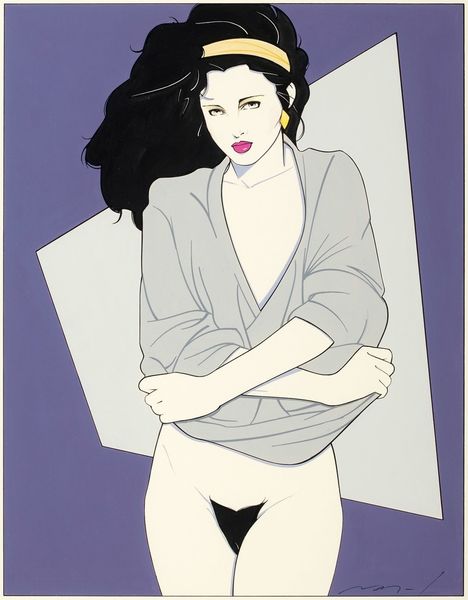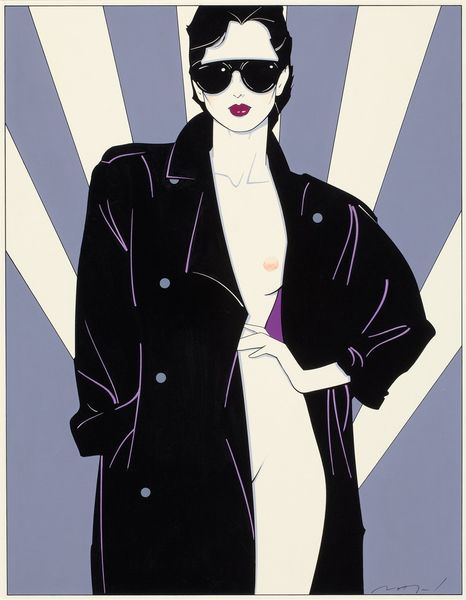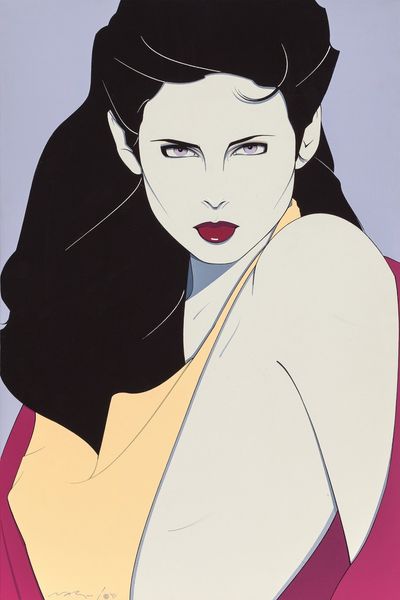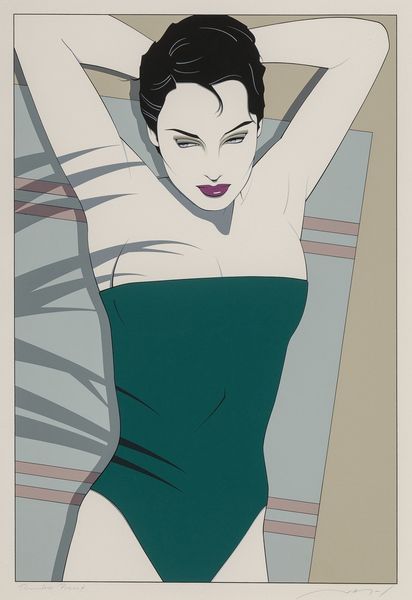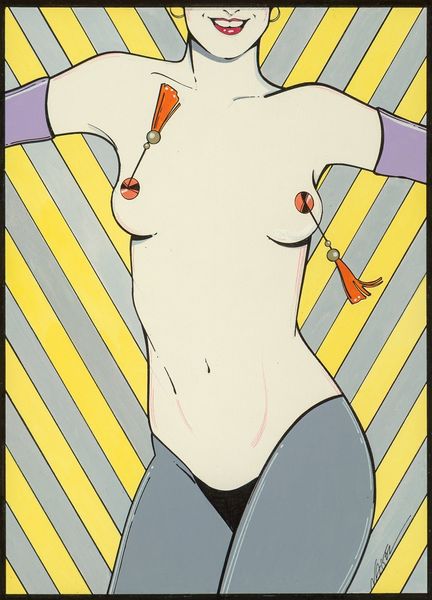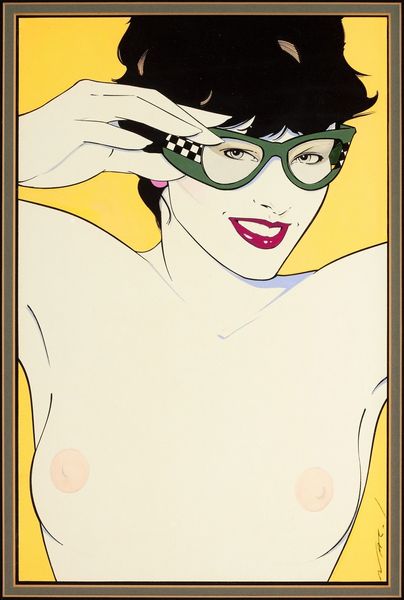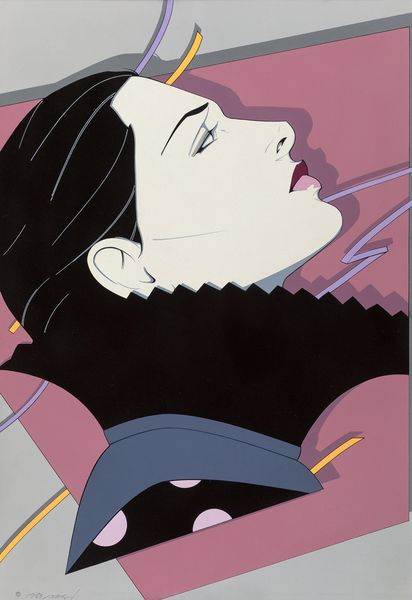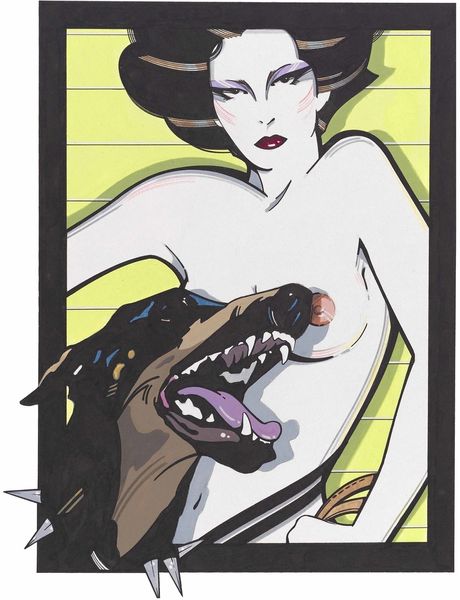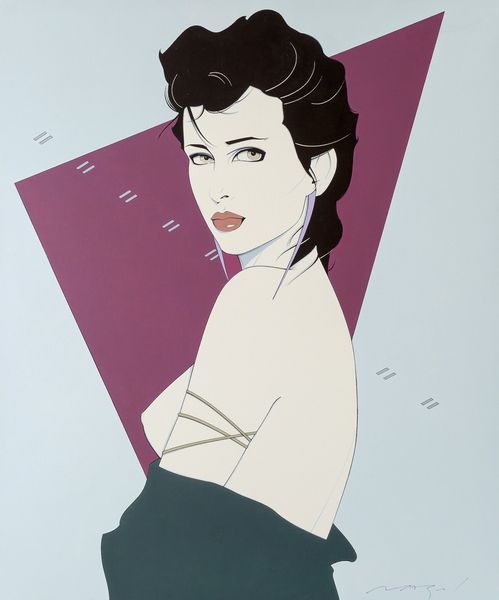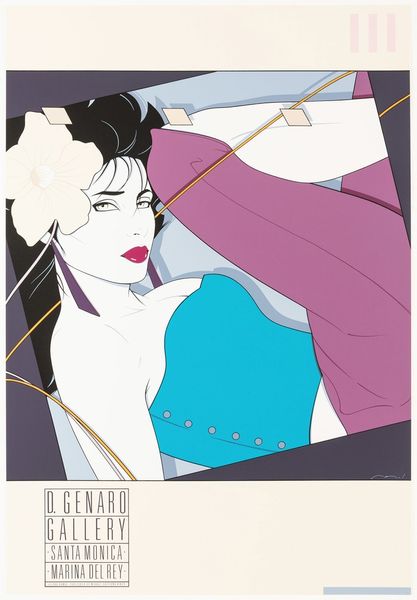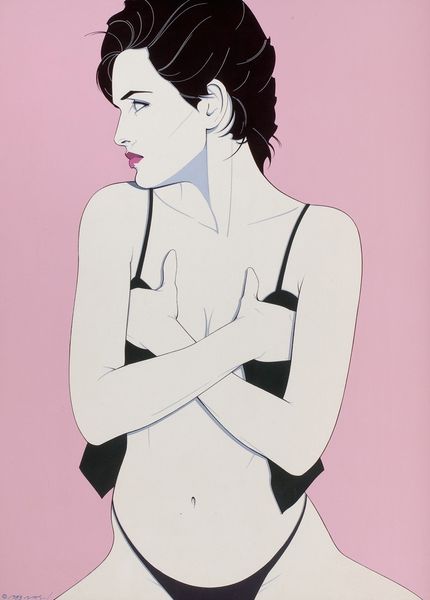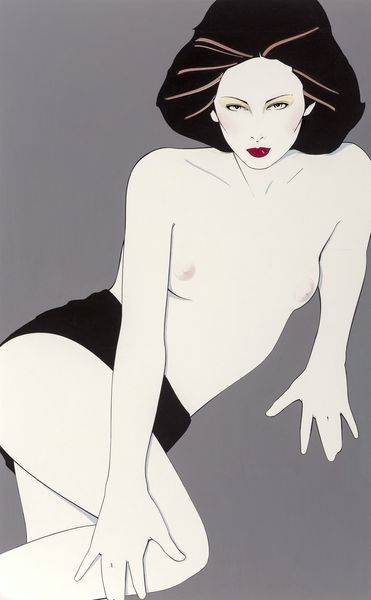
acrylic-paint
#
caricature
#
acrylic-paint
#
figuration
#
pop art-influence
#
pop-art
#
line
#
cartoon style
#
modernism
Copyright: Modern Artists: Artvee
Curator: Let’s discuss this "Playboy illustration" by Patrick Nagel. There is no precise date for this acrylic-paint artwork. My initial impression is one of sleek, almost detached coolness. The color palette is restricted, with cool blues and stark white broken by intense pops of yellow and red. There’s an almost cartoon-like starkness to the linework. What are your thoughts? Editor: That sleekness is a constructed performance of power, right? The association with Playboy immediately forces us to consider the male gaze and the ways in which this stylized representation participates in the commodification of female sexuality, even under the veneer of Pop Art’s knowing critique of consumerism. Curator: Absolutely. Nagel’s work is inextricably linked with the visual culture of the 1980s, which privileged sharp lines and an airbrushed, almost robotic aesthetic. The simplification of form flattens the female figure. What does this simplification communicate? Editor: It communicates a removal of human imperfection and replaces it with artifice, suggesting the unattainable standard imposed upon women by mainstream media and consumer culture. This rendering can be situated in dialogue with feminist theory, examining its cultural and historical impacts. Curator: And the magazine context is key. We can ask how Playboy, as an institution, influenced the production and reception of images. Who were its target demographics and what desires were being manufactured? The visual culture Playboy presented certainly helped to shape societal understandings of gender and sexuality, impacting norms around body image. Editor: The cartoon style is important because of its seemingly detached nature. Is it a celebration of a new feminine aesthetic? Is it also deeply exploitative, simplifying women down to almost caricature, reinforcing traditional power structures even while seemingly embodying the ethos of modernism and its pop-art influence? It's impossible to look at this without examining intersectional narratives that focus on gender and power. Curator: It certainly encapsulates a complex set of socio-political forces operating at the time. Thank you for highlighting its ambiguities, particularly regarding identity and gender politics. Editor: Thank you. Considering art in such a loaded environment encourages discussions about power and influence that extends beyond what one finds aesthetically interesting or conventionally acceptable.
Comments
No comments
Be the first to comment and join the conversation on the ultimate creative platform.
